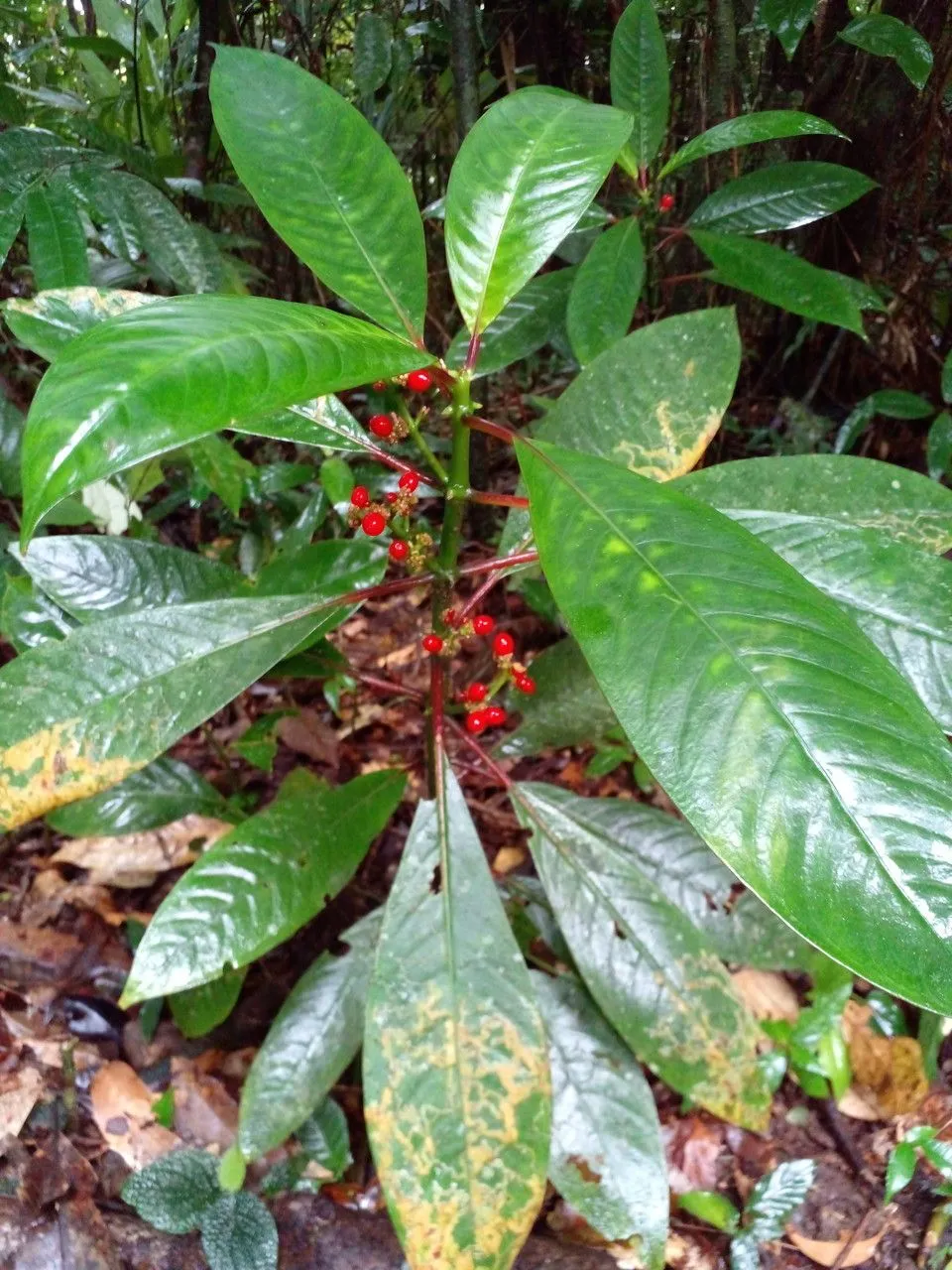
Author: Bremek.
Bibliography: Recueil Trav. Bot. Néerl. 31:290. 1934
Year: 1934
Status: accepted
Rank: species
Genus: Notopleura
Vegetable: False
Observations: Mexico to Trop. America
Tres-cabezas, scientifically known as Notopleura uliginosa and described by Bremek. in the 1934 publication of “Recueil Trav. Bot. Néerl. 31:290,” is a member of the Rubiaceae family. This plant species can be found spanning the region from Mexico to Tropical America, thriving in diverse climates and environments within this range.
Notopleura uliginosa, or Tres-cabezas, typically occupies moist, tropical habitats, which aligns with its species name “uliginosa,” suggesting affinity with wet or swampy conditions. The Rubiaceae family, to which it belongs, is known for its variety of flowering plants, commonly including coffee and gardenia species.
Despite its wide geographic spread, Tres-cabezas has specific ecological interactions and adaptations that enable it to flourish in tropical climates. The plant’s common name, translating to “three-heads,” hints at characteristics of its morphology or possible cultural significance within its native regions.
In essence, Tres-cabezas (Notopleura uliginosa) is a noteworthy example of the biodiversity within the Rubiaceae family, demonstrating the ecological versatility and adaptability that allow it to grow from Mexico through Tropical America.
Spa: ají de gato, tres cabezas
En: Tres-Cabezas, Tres cabezas
Es: Ají de gato, Tres cabezas
: Tres-cabezas
Taken Apr 17, 2019 by OTS – J. González (cc-by-nc-sa)
Taken Jan 8, 2016 by OTS – Zahawi, Zak (cc-by-nc-sa)
Taken Feb 17, 2010 by Tela Botanica − Yoan MARTIN (cc-by-sa)
Taken Oct 29, 2021 by Daniel Barthelemy (cc-by-sa)
Taken Nov 21, 2021 by SINAC Pérez Greivin (cc-by-sa)
Taken Mar 20, 2019 by Marcel Duchamp (cc-by-sa)
Taken Aug 22, 2013 by OTS – Oviedo-Brenes, Federico (cc-by-nc-sa)
Taken Feb 18, 2022 by Anthony Bahuaud (cc-by-sa)
Taken Nov 21, 2021 by SINAC Pérez Greivin (cc-by-sa)
Taken Nov 21, 2021 by SINAC Pérez Greivin (cc-by-sa)
Taken Oct 29, 2021 by Daniel Barthelemy (cc-by-sa)
Taken Nov 21, 2021 by SINAC Pérez Greivin (cc-by-sa)
Taken Sep 15, 2015 by Nelson Zamora Villalobos (cc-by-nc)
Taken Jan 28, 2017 by Tela Botanica − Claire Felloni (cc-by-sa)
Taken Jan 28, 2017 by Tela Botanica − Claire Felloni (cc-by-sa)
Taken Oct 29, 2021 by Daniel Barthelemy (cc-by-sa)
Taken Feb 17, 2010 by Tela Botanica − Yoan MARTIN (cc-by-sa)
Taken Jul 15, 2008 by OTS – Oviedo-Brenes, Federico (cc-by-nc-sa)
Taken Aug 22, 2013 by OTS – Oviedo-Brenes, Federico (cc-by-nc-sa)
Taken Aug 22, 2013 by OTS – Oviedo-Brenes, Federico (cc-by-nc-sa)
Taken Jan 8, 2016 by OTS – Zahawi, Zak (cc-by-nc-sa)
Taken Jan 8, 2016 by OTS – Zahawi, Zak (cc-by-nc-sa)
Taken Sep 15, 2015 by Nelson Zamora Villalobos (cc-by-nc)
Taken Apr 17, 2019 by OTS – E. Salicetti (cc-by-nc-sa)
© copyright of the Board of Trustees of the Royal Botanic Gardens, Kew.
© copyright of the Board of Trustees of the Royal Botanic Gardens, Kew.
© copyright of the Board of Trustees of the Royal Botanic Gardens, Kew.
Family: Myrtaceae Author: (F.Muell.) K.D.Hill & L.A.S.Johnson Bibliography: Telopea 6: 402 (1995) Year: 1995 Status:…
Family: Rubiaceae Author: Pierre ex A.Froehner Bibliography: Notizbl. Bot. Gart. Berlin-Dahlem 1: 237 (1897) Year:…
Family: Sapindaceae Author: Koidz. Bibliography: J. Coll. Sci. Imp. Univ. Tokyo 32(1): 38 (1911) Year:…
Family: Asteraceae Author: A.Gray Bibliography: Pacif. Railr. Rep.: 107 (1857) Year: 1857 Status: accepted Rank:…
Family: Fabaceae Author: Medik. Bibliography: Vorles. Churpfälz. Phys.-Ökon. Ges. 2: 398 (1787) Year: 1787 Status:…
Family: Aspleniaceae Author: (Cav.) Alston Bibliography: Bull. Misc. Inform. Kew 1932: 309 (1932) Year: 1932…